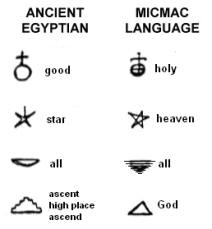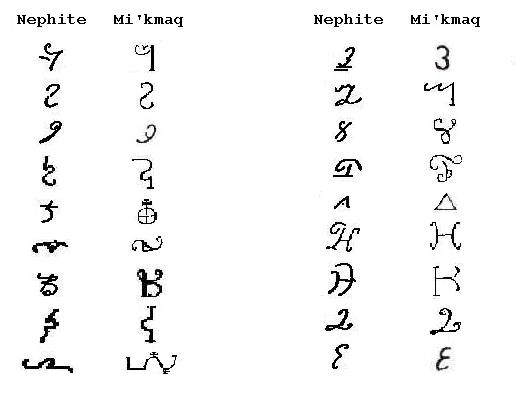|
“…to
A Hebrew inscription that a Nephite could read
There are place-names in
western As with the name “Y’hudah” (Judah), the contracted Semitic name “Yhud” is older than the book of Joshua. (Joshua 19:45) The Book of Mormon prophet and patriarch Nephi would have been familiar with the name “Yhud”. Later in the Bible we read: יְדִיעַ known לֶהֱוֵא Be it לְמַלְכָּא unto the king,דִּי־ thatאֲזַלְנָא we wentלִיהוּד into Judea, (literally: “to Yhud” or “to Judea”) (Ezra 5:8) In rendering the name “Judea” from “Yhud”, the King James translation takes a cue from the Greek translation of Jewish scripture. (Septuagint, Ezra V.8) The Hebrew name “Y’hudah” (Judah) can also be translated “Judæa”. Compare Matthew 2:1 (KJV) with Hebrew Matthew (B'sorot Matti) 2:1. Following King James Bible convention, the English Book of Mormon recounts: “And notwithstanding the
Lamanites being cut off from their support … they were still determined to
maintain the city; therefore it became expedient that we should take those
provisions and send them
to Judea, and
our prisoners to the “ Yhud”, translated “Judea”, was a Nephite fenced city southwest of Zarahemla, near the shore of the “west sea”. (Alma 53:22; 56:9)The biblical and Book of Mormon expression “to Judea” is written below in post-exilic block Aramaic/Hebrew letters. These letters were adopted after the Babylonian exile. In other words, they came into use later than the time period of the Book of Mormon prophet Lehi, who left Jerusalem and came to American with his family. The transliteration in English attempts to preserve authentic letter identification and pronunciation. On the left the expression is translated into the familiar language of the King James Bible:
To But what does “liYhud”, “to Judea” look like in pre-exilic
Hebrew letters – the kind of Hebrew letters
familiar to Lehi?
Here again is the expression “to ל י ה ו ד Compare the above to the five letters spelling “LiYhud” in pre-exilic Hebrew familiar to the Book of Mormon patriarch Lehi (below):
© W. V. Coon 2011 Now see if you can discern similar letters inscribed on the tablet below:
This tablet was
reportedly recovered in situ during a professional archaeological
excavation of a burial mound in
Over the years, professional speculation has posited the characters to be either “Cherokee”,
or a “Hebraic script” (unfortunately published upside-down by the
Smithsonian). It has been argued that the Hebrew inscription,
if it is not a well contrived hoax, indicates a trans-Atlantic crossing to Though somewhat altered, the letters clearly match a form of pre-exilic or paleo Hebrew - a form of ancient writing that changed little from the time of Isaiah to the time of Jeremiah, Lehi’s contemporary:
© Kris J. Udd 2010
The ancient Hebrew (Aramaic) expression on the stone, parallels a quote (including an American place name) from the Book of Mormon. According to the Book of Mormon, one of the writing systems of the Nephites was “altered” pre-exilic Hebrew. (1 Nephi 1:2-4, Mormon 9:33) Lehi would have been able to read the Bat Creek inscription! He would not have been familiar with the modified square characters inscribed on another “find” - the Ohio Decalogue stone.
The individual
In contrast to the phony Ohio stones, several professionals have ardently defended the controversial Bat
Creek inscription as genuine. The Bat Creek inscription is a cut above
specious Michigan relics, and glamorous
Ohio Hebrew
stones, some of which are admitted fakes.
The Bat Creek mound tablet is the
finest example of a correspondence to a New World Book of Mormon place name;
engraved in what appears to be a form of ancient Hebrew known to Lehi. If
nothing more, the Bat Creek inscription is consistent with the Book of
Mormon's classification in the “Mound-builder” genre. Israelites in ancient America is a reoccurring theme
in this North American genre.
Correlations do exist for the two Nephite writing
systems mentioned in the Book of Mormon.
(Mosiah 1:4,
Mormon 9:32-33)
First, there is the logogrammatic, Egyptian-like writing similar to
North American Micmac (Mi’kmaq). Mi’kmaq hieroglyphs have an oral tradition
claiming their use prior to European contact.
(Mi’kmaq
Hieroglyphic Prayers, Readings
in North Americas First Indigenous Script,
Edited
and Translated by David L. Schmidt and Murdena
Marshall, Introduction, pg. 4)
The above Nephite symbols
come from the “Caractors” transcript (early Mormon transcript of characters
copied from the Book of Mormon Plates).
Care has been taken to avoid any comparisons that
draw from Mark Hofmann’s
“Anthon Transcript” forgery.
Though the spoken
language of the Mi’kmaq people of northern America is
certainly not the same as Nephite, the style of Nephite writing resembles
Mi’kmaq hieroglyphs. In both Nephite and Mi’kmaq, symbols represent entire
words. This explains why Nephite “reformed Egyptian” is even more compressed
than Nephite “Hebrew”.
(Mormon 9:33)
Second, we have the altered pre-exilic Hebrew as it appears on the Tennessee mound tablet. As with Biblical Archaeology, we should distinguish between evidence that only supports
the literary setting of scripture, and evidence proving that scripture is
literal history. The latter can be much harder to come by. Mainstream
Anthropology, American History and Literature scholars accept the
“Mound-builder” literary setting for the Book of Mormon.
(Garlinghouse, Thomas, “Revisiting the Mound-builder Controversy”, History
Today, Sept 2001, Vol. 51, Issue 9, starting pg. 38)
As the Book of Mormon becomes less of a show piece (tied to media, tourism,
and other financial interests) and more of an object of personal study,
the authentic setting for the scripture will become obvious to more
Latter-day Saints. See Did Professor Anthon and Doctor Mitchell Actually Read Some Book of
Mormon Characters? (2021) See also Messianic Message of the Stones of Memorial. (2023)
|
|

